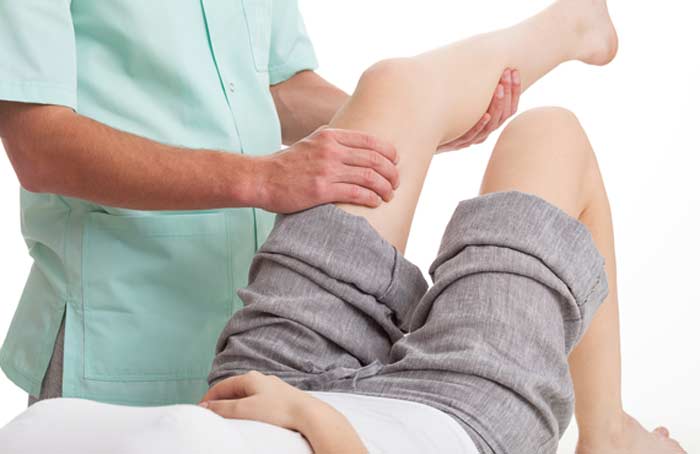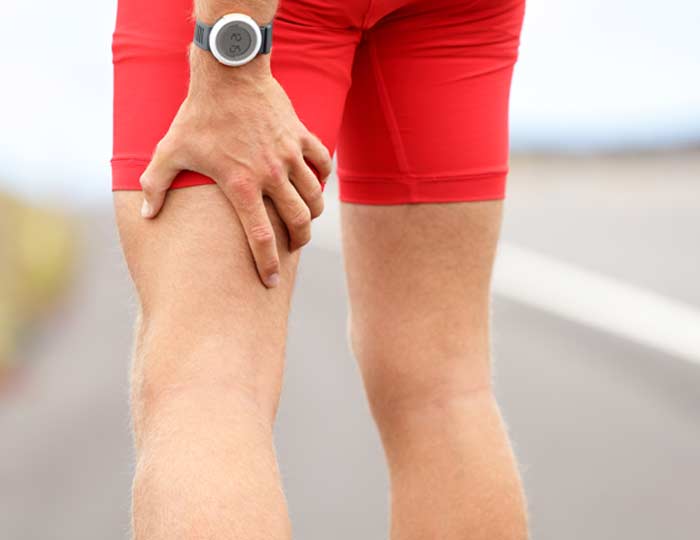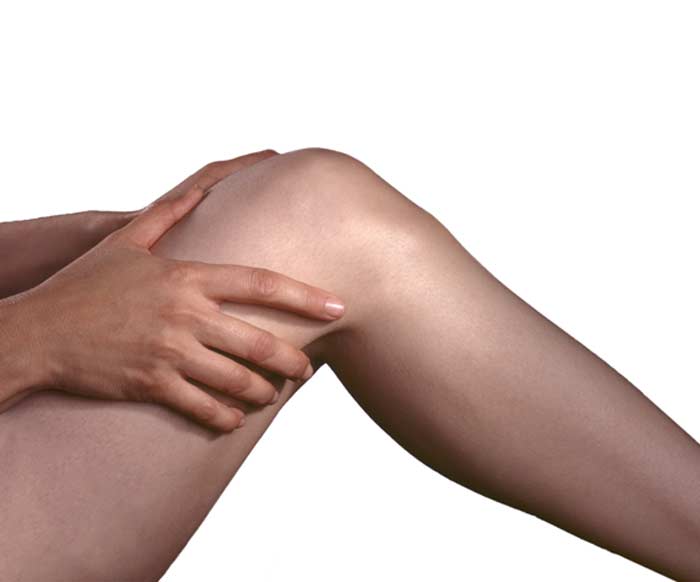
A hamstring strain is a common occurrence among many athletes of varying skill levels.
A hamstring sprain is what’s experienced if one or more of the three hamstring muscles (semitendinosus, semimembranosus, and biceps femoris) in the back of leg are excessively stressed or pulled.
The purpose of the hamstrings that run along the rear part of each thigh is to allow the hips to extend and the legs to bend at the knee. Here’s what you need to know about hamstring strains and your available treatment options.
Causes and Risk Factors
Hamstring muscles often become overloaded during activities requiring repetitious running or jumping movements or sudden stops and starts. Having had a previous hamstring injury also increases the risk of strain, as does having tight hamstrings or poor flexibility within the upper leg and not warming up before exercise or sports-related activities. Additionally, a muscle imbalance where the quadriceps in the front of the thighs are stronger than the muscles in the back may contribute to a hamstring strain. Also, because glutes and hamstrings work together, weak glutes may lead to injured or strained hamstrings.


Hamstring Strain Symptoms
Minor or mild strains may cause minimal discomfort. A more severe strain often causes sharp and sudden pain along the back of the affected thigh. Hamstring strains sometimes produce a burning sensation or weakness within the affected area. A strained hamstring may also produce symptoms that include:
- Severe, agonizing pain
- An inability to walk or stand
- Pain that worsens with activity or exercise
- Tenderness or bruising
- Pain that extends to the lower buttocks from the back of the affected thigh when bending, walking, or attempting to straighten the leg
Diagnosing and Treating Hamstring Strains
Diagnosis of a hamstring strain usually starts with a physical examination. You may be asked to extend the affected leg or attempt to walk. The leg may also be gently moved into different positions in an attempt to determine which hamstring muscle is strained. If a strain is severe or vague in nature, an X-ray or MRI scan may be performed to make a positive diagnosis or determine the extent of the damage. Image tests can also show whether or not muscles and tendons are torn.
With minor or moderate hamstring strains, treatment may involve applying ice to the affected part of the leg, temporarily using crutches to take weight off of the leg that’s affected, elevating the leg, or using a compression bandage to ease swelling. Over-the-counter pain relievers or NSAIDs (non-steroidal anti-inflammatory drugs) may also ease pain and discomfort enough to allow the strain to heal. Treatment of a strained hamstring muscle can also involve:
- Therapeutic physical therapy methods such as massage therapy
- Flexibility and strengthening exercises
- Surgery to reattach damaged or torn hamstring muscles
A conditioning program that includes hamstring stretches and exercises may reduce injury risks. If you’re a professional or amateur athlete, adhering to proper form may further ease stress on hamstrings. Regular conditioning can also be beneficial if you have a job that requires regular leg movements or repetitious stress around the back part of your thighs.
